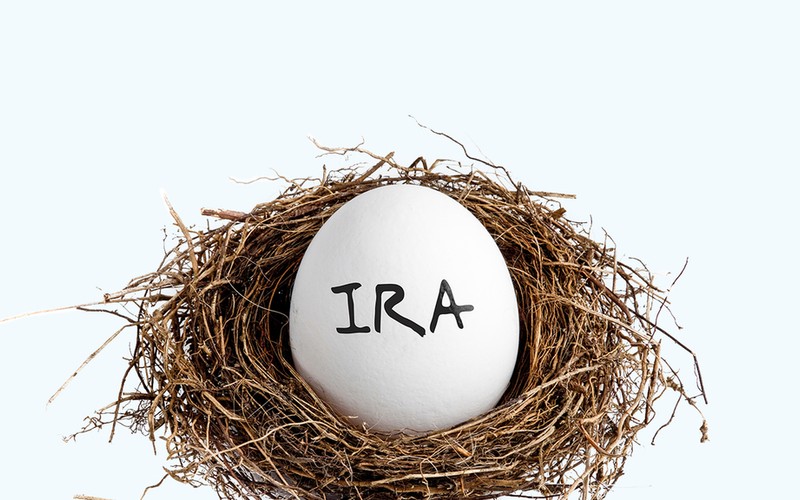Many people with a large sum of money in their retirement accounts are looking for ways to invest outside the traditional options. According to the Investment Company Institute, US retirement assets held in IRAs total about $11.7 trillion (Q2 2022).
While the stock market has been a great place to invest in over the last few years, owning publicly-traded stocks can sometimes feel like riding a roller coaster. Investing in real estate is a popular way to diversify your retirement portfolio and take advantage of long-term appreciation, and it can be a more stable option than stocks, mutual funds, and bonds.
By using self-directed IRA (SDIRA) funds, investors can purchase real estate without paying taxes on gains or rental income until distributions are made, making self-directed IRAs an attractive option for real estate investors looking to buy rental properties or other commercial or residential investment property. In addition, with this type of IRA, you can control where your money is invested and choose properties that fit your investment goals.
What Is a Self-Directed IRA and How Does It Work?
A self-directed IRA – also known as a Checkbook IRA – is a retirement savings account that allows you to invest in alternative assets beyond stocks and bonds. The self-directed nature of the SDIRA allows for diversification with more investment options, including real estate, private companies, tax liens, and precious metals. When using an SDIRA to buy real estate, you can use pre-tax money from a traditional IRA or after-tax funds from a Roth IRA in your retirement account.
Essentially, with a self-directed IRA, you are your own investment manager. This means you will need a solid understanding of the different types of investments available and how they work before making any decisions. The account holder will also be responsible for doing their due diligence on potential investments.
When investing in real estate through a self-directed IRA, all income and expenses associated with the property must flow through the retirement account. Profits generated from the investment can be withdrawn when the investor reaches retirement age, allowing them to take advantage of tax deferment or tax-free gains.
The contribution limit for 2023 is $6,500 ($7,500 if you are 50 or older). Investors have the option to open a traditional or Roth self-directed IRA, with the same pre-tax and post-tax contributions set by the Internal Revenue Service. Because of these limits, investors may finance self-directed IRAs through retirement funds rolled over from different accounts.
Pros and Cons of Using a Self-Directed IRA To Buy Real Estate
One of the main benefits of investing in a self-directed IRA is that you can earn higher returns than possible with a traditional retirement account. In addition, with more control over your investment choices, you can invest in higher risk/higher return assets if you so desire.
Of course, it’s important to remember that there’s also the potential for more significant losses when investing in high-risk assets. So, as with any investment decision, it’s essential to weigh the potential risks and rewards before making any decisions.
Pros
There are many potential benefits to including real estate in your self-directed retirement portfolio, such as rental income and tax advantages:
- Ability to invest in a wide range of real estate assets.
- Tangible investments as opposed to paper stocks and bonds.
- Opportunity to diversify retirement portfolio beyond traditional financial products.
- Tax-deferred income and gains could lead to higher returns.
Cons
While self-directed IRAs may offer certain benefits, they also come with some potential drawbacks, including:
- Accessing cash flows and gains before age 59 ½ can result in income tax and penalties.
- Buying, managing, and selling real estate with a self-directed IRA is subject to strict regulations that must be followed carefully to avoid significant taxes.
- Tax benefits such as claiming depreciation are not available through self-directed IRAs, so investors cannot benefit from income-offsetting operating losses.
- Finding an approved self-directed real estate IRA custodian may be challenging, as only a few financial institutions offer these plans.
How To Set Up an SDIRA Account
If you’re interested in setting up an SDIRA, there are two main options: custodial and checkbook. Let’s take a look at the pros and cons of each option.
SDIRA Custodian Accounts: The Pros
When you set up an SDIRA with a custodian, you entrust your account to a qualified third-party trust company. The IRS maintains a list of approved nonbank trustees and custodians.
Custodial accounts have several advantages:
- You don’t have to worry about managing the day-to-day details of your account. That’s the custodian’s job.
- Custodians are experienced in handling IRAs and other retirement accounts. They know the ins and outs of the law and can make sure that your account stays in compliance.
- Many custodians offer online portals where you can view your account balance and activity and invest in preapproved investments.
SDIRA Custodian Accounts: The Cons
One downside of using a custodian is that you will likely have to pay fees for their services. These fees vary widely, so it’s important to research and shop around before selecting a custodian. Another potential downside is that you may have less control over your account than if you were to handle it yourself. For example, some custodians may limit the investments that you can make or require that you get approval before making certain types of investments.
Checkbook SDIRA Accounts: The Pros
A checkbook SDIRA gives you more control over your account because you are the account’s trustee and have direct control over all aspects of it. This includes making investment decisions, writing checks, and transferring funds. You also won’t have to pay any fees to a third-party custodian.
Checkbook SDIRA Accounts: The Cons
Of course, with this increased level of control comes increased responsibility. For example, you will be responsible for ensuring that all transactions comply with IRS rules and regulations. You will also need to keep good records of all activities in the account if the IRS ever audits you. And because you’re handling everything yourself, there’s always the risk that you could make mistakes that could cost you money or get you into trouble with the IRS.
Steps Involved in Buying Real Estate With a Self-Directed IRA
Once you’ve decided on the type of self-directed IRA account you want to use, there are several steps involved in buying real estate with an individual retirement account:
- Find a self-directed IRA custodian or trustee for your account. You should research different providers and compare their fees, services, and investment offerings to ensure they meet your needs.
- Open the self-directed IRA account with the custodian or trustee by submitting all required documents, such as proof of identity and other financial documentation. Once your account is set up, you can begin investing in real estate using your self-directed IRA funds.
- Identify the type of real estate you want to purchase. You should consider factors such as location, property type (residential or commercial properties), and potential for long-term appreciation.
- Locate an appropriate self-directed IRA real estate investment. This can be done through online real estate marketplaces like Arrived or by working with a qualified broker specializing in self-directed IRA investments.
- Complete the purchase process. This includes researching local laws, obtaining financing with a non-recourse loan (if necessary), and closing the deal. When buying self-directed IRA real estate, it is important that all purchases are made with only funds from your self-directed IRA account – not your personal funds – to ensure that you comply with IRS rules and regulations.
- Finally, you must manage your self-directed IRA real estate investments according to IRS regulations. This includes submitting all required paperwork, filing annual tax returns, and tracking income and expenses associated with the self-directed IRA investment property.
Rules To Keep in Mind When Investing in Real Estate With a Self-Directed IRA
If you’re using a self-directed IRA to invest in real estate, there are some additional guidelines you’ll need to follow:
- To remain compliant with IRS rules, all real estate purchases must be made with funds from the self-directed IRA account and not personal funds.
- Self-dealing by selling property to a disqualified person, such as yourself, or a related party, such as a family member, are prohibited transactions by the IRS.
- Real estate investments in a self-directed IRA must be titled under the name of the IRA owner and not you since it is considered its own entity separate from yourself.
- Self-directed IRAs can participate in joint venture real estate opportunities or partnership investments using a combination of funds to purchase property.
- Management and leasing fees, utilities, maintenance costs, and property taxes for an IRA-owned property must all be paid through funds within the IRA.
- All income generated through real estate investments with a self-directed IRA must stay within the IRA and be paid directly to the IRA.
- UBIT may apply to investment income generated from financed rental property held in a self-directed IRA, but investment income exempt from UBIT includes real estate rental income, interest income, capital gain income, and dividend and royalty income from business ownership.
Tips for Investing in Real Estate With an IRA
When done correctly, investing in real estate with an IRA can be a smart way to diversify your portfolio and build long-term wealth. However, there are a few things to keep in mind. First, working with a reputable and experienced IRA custodian is important. They can help with the paperwork and ensure that all transactions are completed properly.
Second, be sure to do your homework on any potential investments. Location is key in real estate, so research the market carefully before making any decisions. Additionally, you’ll want to be sure you’re not putting all your eggs in one basket. Diversify your portfolio by investing in multiple properties in different geographic areas.
Finally, remember that an IRA is a long-term investment. So don’t be tempted to cash out or make early withdrawals – hold onto your property for the long haul and reap the potential rewards down the road. One of the key benefits of investing in real estate through an IRA is that you can hold onto the property for as long as you want. This means you can wait for the perfect opportunity to sell or let the property appreciate over time.
Following these tips can help you maximize the potential of your self-directed IRA and make wise investments that will provide long-term growth and security.
Closing thoughts on SDIRAs
Self-directed IRAs can be a great way to invest in real estate, but it’s important to understand the risks and rewards associated with this type of investment before making any decisions. If you’re considering using your SDIRA funds to purchase a rental or residential investment property, research the market carefully and consult an experienced financial advisor.
Investing through Arrived can help minimize the unknowns and the hassle of finding and managing properties for your self-directed IRA. Browse available properties today and see how your initial investment could grow over the long term.
The opinions expressed in this article are for general informational purposes only and are not intended to provide specific advice or recommendations for any individual or on any specific security or investment product. The views reflected in the commentary are subject to change at any time without notice. View Arrived’s disclaimers.







